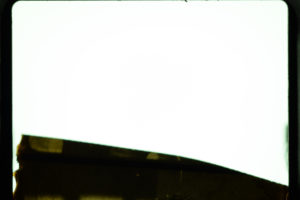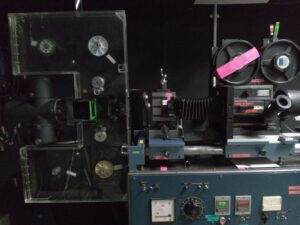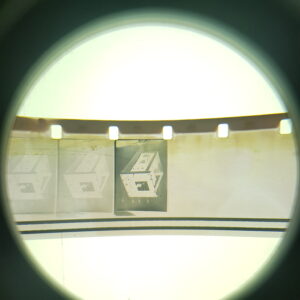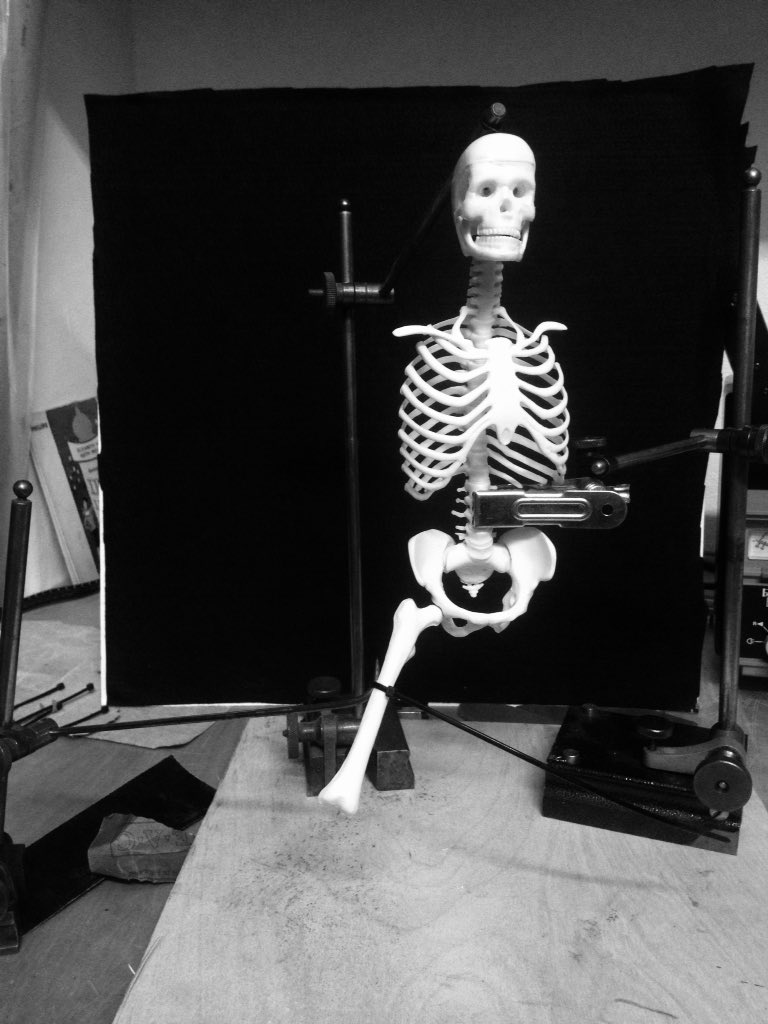
In the video tests in an earlier post you can see high speed video of a projected 35mm image using a single aperture blade on a Kinoton.
After analysing the video its possible to say with some certainty that the RATIO of light to dark is 3:2 respectively. So there are 3 units (or steps, doesn’t matter) of light to 2 steps of dark.
This uses the 1200FPS footage which yields 50 frames/steps per real life second of time.
In this 50 step sequence 15 are light and 10 are dark, repeated again 15, 10.
If we want to now translate this to degrees, or angles to check against a physical blade we do it like this.
Each rotation of a blade in steps (or counts, just a measure unit) is 3, 2, 3, 2 which equals 10 units. 360 divided by 10 is 36.
To get the light count (3 x 36) we get 108 degrees.
To get the dark count (2 x 36) we get 72 degrees.
On a double bladed projector blade then the dark parts will be 72 degrees each and the light gaps 108 each.
On a single blade like the kinotons we add them getting 216 and 144.
Surprisingly there is VERY little fading in or out of the black. So in the 1200 per second video dark segment of 10 frames only the first and last frame are slightly dimmer.
This means in action that the snap to dark and the snap to light happens in 1/1200 of a second each. Not worth trying to mimic.
So the implications for my nitrate film digital flicker restoration is that we must see 3 frames of picture then 2 pictures of black. If the base frame count is 5 now, to run this clip at the speed of 13FPS (remember, my subjective speed choice) then the clips needs to run at 65FPS, 5 x 13.
As you were.
Oh, lastly the percentage then is 60% light 40% dark.


